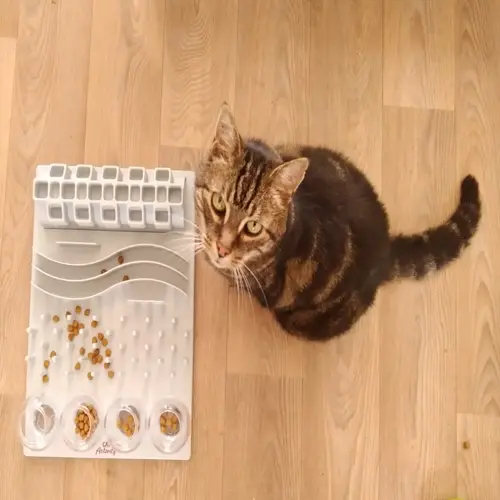How can I safely approach a hiding cat?

Written by
Robert Brown
Reviewed by
Prof. David Walsh, Ph.D.You find your cat stashed away in a corner of a closet or cupboard. How you approach them is critical to stress levels. Safe interaction techniques build trust levels rather than causing panic. I have taught many, many people how to execute this delicate function. You must respect the communication signals of your feline friend and proceed slowly.
Calm Positioning
- Sit quietly 3-5 feet away without direct eye contact
- Bring a book or quiet activity to maintain stillness
- Keep sessions under 20 minutes initially
Verbal Reassurance
- Use soft monotone voice below normal volume
- Repeat familiar words like treat or dinner
- Avoid sudden pitch changes that startle
Food Motivation
- Place high-value treats every 12 inches toward you
- Use tuna or chicken for maximum effect
- Employ long spoons to avoid hand intrusion
Pay close attention to body language during your interactions. Flopped ears mean stop right away. Slow blinking indicates they are comfortable. When a tail is up, it shows they are curious. These clues will help dictate what to do next more than any timeline.
Create positive associations with your presence. Bring their favorite blanket when sitting nearby. Play quiet classical music during sessions. These elements help cats link you with security.
Measure progress in millimeters, not miles. One successful session might mean just seeing their nose emerge. Celebrate these tiny victories. Consistent, gentle approaches yield the best long-term trust.
Read the full article: Cat Hiding Behavior Explained: Causes and Solutions

